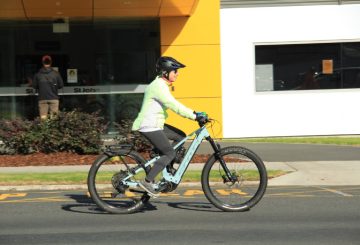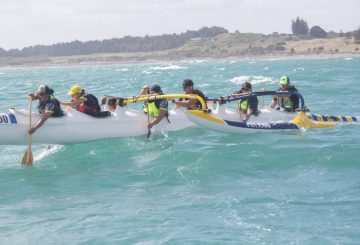Ipinagdiriwang ng mga boluntaryo ang ika-30 anibersaryo ng isang proyekto na nakatulong na mai-save ang mga buhangin sa baybayin sa Bay of Plenty. Perpekto ang panahon para sa okasyon, ayon sa Bay of Plenty Regional council na si Kat Macmillan. Ipinahayag niya ang kanyang pasasalamat sa mga boluntaryo para sa kanilang pagsusumikap sa nakalipas na tatlong dekada.
Ang kamay ay ipinagdiriwang kasama ang ilang mga kaganapan sa loob ng Volunteer Week. Naniniwala ang Coast Care, ang samahan sa likod ng proyekto, na ang pinakamahusay na paraan upang makilala ang tagumpay ng programa ay upang ipagdiwang ang mga taong kasangkot dito.
Dalawang kaganapan ang ginanap noong Linggo ng umaga sa Pāpāmoa Beach at Maraetotara Reserve sa Ōhope. Kasama sa mga kaganapan ang mga light refresh na ibinigay ng Coast Care. Dalawa pang mga kaganapan ang binalak para sa Hunyo 23 sa Pohutukawa Park, Waihī Beach, at Kaituna: Ōtamarākau, Pukehina.
Ang Coast Care ay isang programa sa pagpapanumbalik sa baybayin na nakikipagtulungan nang malapit sa mga lokal na komunidad, awtoridad, at paaralan upang maibalik at protektahan ang mga buhangin na buhangin sa kahabaan ng Bay of Plenty beach. Ang mga boluntaryo, kabilang ang mga residente, gumagamit ng beach, at mga paaralan, ay inilaan ang kanilang oras at kadalubhasaan upang pangalagaan ang mga dunes. Ang programa ay pangunahing pinondohan ng konseho, na nagbibigay din ng iba pang mga mapagkukunan at mga tool sa pang-edukasyon.
Kasama sa programa ang apat na konseho ng distrito at lungsod sa baybayin – Western Bay of Plenty, Tauranga, Ōpōtiki, at Whakatāne – at ang Department of Conservation. Tumutulong ang mga boluntaryo sa paglilinis ng beach, pagtatanim ng mga katutubong halaman ng dune, pamamahala ng mga damo at peste, bakod, at marami pa.
Tinuturo din ng Coast Care ang mga tao sa kahalagahan ng pag-aalaga sa mga dunes, na mahalaga para sa pagprotekta sa aming mga beach. Ang mga dun, na natatakpan ng mga katutubong halaman, ay kumikilos bilang isang hadlang sa pagitan ng lupa at dagat. Kung wala ang mga halaman na ito, lumalabas ang buhangin, at nawawala ang mga dun, na iniiwan ang lupain na nakalantad sa panahon at pagtaas ng alon.
Ang kalusugan ng ating baybayin, lalo na ang mga dunes, ay apektado ng katanyagan ng ating mga beach, pagbabago ng klima, peste, at presyon ng pag-unlad. Ginagawa nitong mas mahalaga ang gawain ng mga grupo ng Coast Care.
Inanyayahan ang mga boluntaryo na sumali sa mga araw ng pagtatanim ng komunidad ng Coast Care Bay of Plenty. Ang trabaho ay madali, kasiya-siya, at kapaki-pakinabang. Kailangang magdala ng mga boluntaryo ang matibay na sapatos, angkop na damit, guwantes sa paghahardin, at isang spade.
Upang makisali, punan ang Coast Care form online upang sumali sa mailing list at makatanggap ng mga update sa mga lokal na inisyatibo. Maaari ka ring matuto nang higit pa tungkol sa kung paano protektahan at ibalik ang kapaligiran sa baybayin sa Bay of Plenty.

















































-660x440.jpg)











